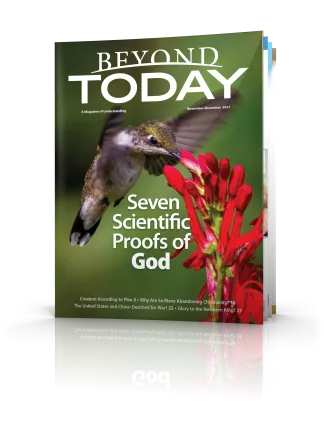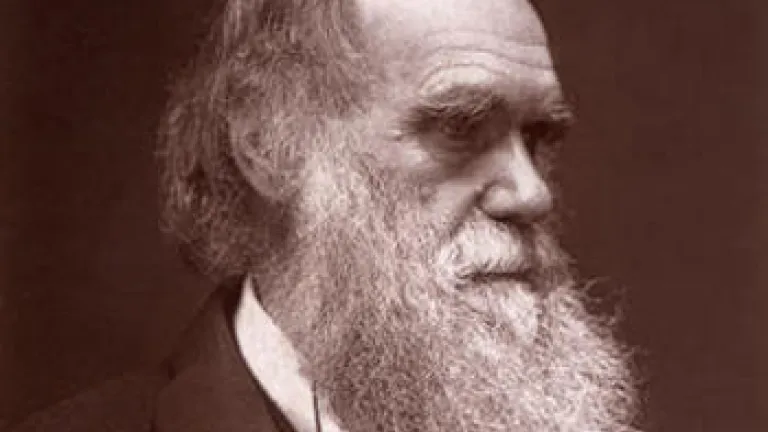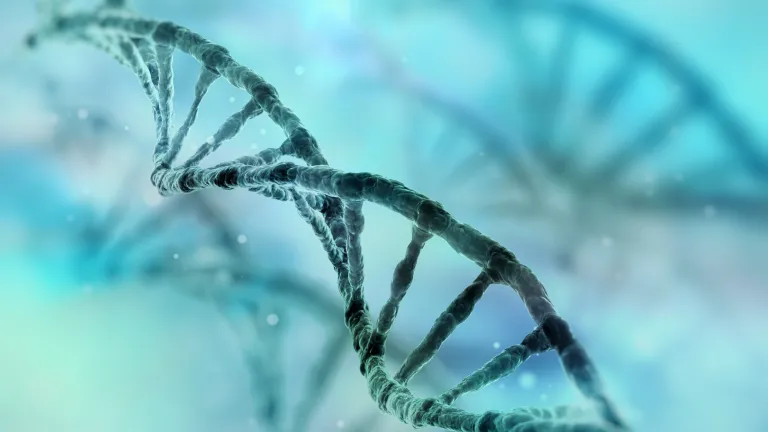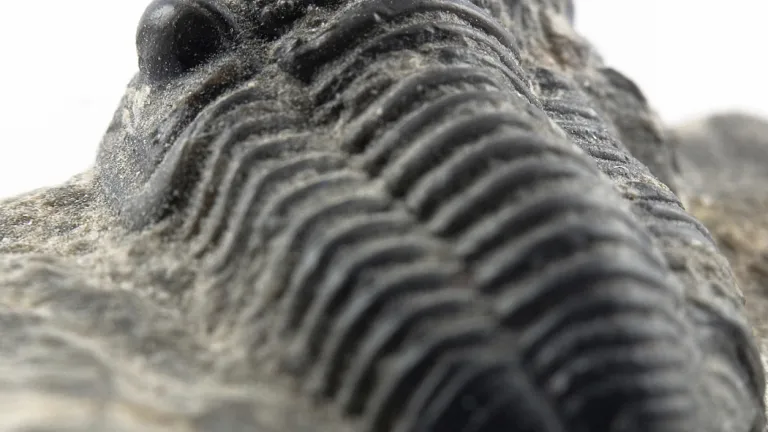Seven Scientific Proofs of God

Is it possible to know whether God is real? Can we know for sure? Yes we can! We only need to examine the evidence and accept what it clearly reveals.
In an increasingly secular society, many people today, especially those in public school or higher education, face intense pressure to reject belief in God. In most colleges and universities, especially in the Western world, a great many young men and women who start out believing in God will eventually end up denying His existence. They are not prepared for the barrage of arguments from textbooks and classes taught by atheist and agnostic teachers.
What can be done to avoid such tragic results? One key element is to educate and equip yourself and young people with arguments and answers to counter the attacks against belief in God they will encounter.
What does the evidence show?
Ironically, as scientific discovery has progressed, the evidence for God’s existence has actually grown stronger rather than weaker, although most of the media and educational institutions will not readily admit it. One exception was a recent article in The New York Times’ opinion page, where Ross Douthat made the case that there are “important ways in which the progress of science and the experience of modernity have strengthened the reasons to entertain the idea of God” (“A Guide to Finding Faith,” Aug. 14, 2021, emphasis added throughout).
He explains: “The great project of modern physics, for instance, has led to speculation about a multiverse in part because it has repeatedly confirmed the strange fittedness of our universe to human life. If science has discredited certain specific ideas about how God structured the natural world, it has also made the mathematical beauty of physical laws, as well as their seeming calibration for the emergence of life, much clearer to us than they were to people 500 years ago.”
Intelligent Design pioneer Dr. Stephen Meyer, discussed elsewhere in this issue, adds: “The major developments in science in the past five decades have been running in a strongly theistic direction. Science, done right, points toward God” (quoted by Lee Strobel, The Case for a Creator, 2004, p. 77).
It’s vital to have faith in God’s existence (Hebrews 11:6). Yet this is not a blind faith, but one that’s based on clear evidence in creation all around us (Romans 1:20).
Scientists might be reluctant to admit it, but they are finding it harder to deny the overall picture of a carefully designed and purposeful universe.
Douglas Ell, an MIT graduate in math and physics who also holds a law degree, was previously a longtime skeptic about God. Yet no longer. He explains in his 2014 book Counting to God: A Personal Journey Through Science to Belief why he now accepts the existence of God: “Modern science has revealed a universe of absolute wonder. Wonder in the sense of awe, astonishment, surprise, and admiration. Wonder in what caused our universe to come into being; wonder in why our universe is designed just right for life, wonder in how the incredible complexity of even the simplest life could possibly have arisen.
“Each year brings new scientific evidence of wonder, facts for which there are essentially no explanations without God, no believable way around the wonder. Contrary to what you may have read, and contrary to what you may believe, science and religion are converging on wonder. The universe is a marvel to behold, and both scientists and religious believers are in awe of its magnificent design” (pp. 13-14).
Ell published a newer book in 2020 titled Proofs of God: A Conversation Between Reason and Doubt. Though written for teens and young adults, its clear and compelling case for a Creator is highly recommended to all.
The evidence for intelligent creation continues to mount. Here we’ll look at seven scientific findings that prove the existence of God.
1. Science has discovered ample evidence that the universe had a beginning.
The scientific consensus 100 years ago was that the universe was eternal. This idea began to unravel with the implications of Albert Einstein’s Theory of Relativity back in 1916, where his equations pointed to an expanding universe. Yet he didn’t like that outcome and so added a constant to his equation that nullified the expansion. Later, he admitted it had been the biggest mathematical blunder in his life.
Then in 1929 astronomer Edwin Hubble affirmed he saw galaxies expanding outward, which meant they had been much closer together in the past. Einstein, intrigued, wanted to see the evidence for himself and in 1931 he visited the Mt. Wilson Observatory in Los Angeles, Calif. Einstein peered through the telescope, examined the evidence and then concluded, “I now see the necessity of a beginning.” This started a change in the scientific attitude toward the cosmos.
Decades after, in 1965, two U.S. scientists detected the remnants of the initial burst of energy of the creation event typically called the “Big Bang.” They both won a Nobel Prize in physics. One of them, Arno Penzias, later declared, “The best data we have [about the Big Bang] are exactly what I would have predicted had I nothing to go on but the first five books of Moses, the Psalms and the Bible as a whole” (“Clues to Universe Origin Expected,” The New York Times, March 12, 1978, p. 1).
With the evidence at hand, what was written in Genesis 1:1 truly shocked many scientists by its accuracy: “In the beginning, God created the heavens and the earth.” Here it says the universe of matter and energy appeared at a certain point in time and was all created by a Supreme Creator who existed before all of this happened. It was a huge proof of God’s existence, with no real alternative explanations for a universe that, according to modern physics, appeared out of nothing.
2. Science has found the universe to be fine-tuned for life.
Almost 50 years ago, in 1973, cosmologist Brandon Carter found that the independent constants or laws in physics have one highly unusual characteristic in common—they are precisely the values needed to establish and sustain a universe capable of producing life. This is another enormous and virtually uncontested proof for a universe that has been carefully designed.
Scientists have found some 30 constants or laws of physics that govern the universe. All are unrelated to each other and yet are finely tuned to incredible proportions to make life possible. The evidence points to “Someone” spending a lot of time tuning all of these laws so they would work in unison.
Remarkably, the Bible revealed this truth long before any scientist discovered these facts. As Jeremiah 33:25 states, “But I, the Lord, have a covenant with day and night, and I have made the laws that control earth and sky” (Good News Translation).
3. Scientists can’t explain the origin of life and its genetic code apart from an Originator.
Contrary to what many have been led to believe, scientists have no realistic explanation for how life arose.
Even the famous atheist and evolutionist Richard Dawkins admitted regarding the appearance of life, “Nobody knows how it happened” (Climbing Mount Improbable, 1996, p. 282). Furthermore, one of the discoverers of the DNA code, the atheist Francis Crick, concluded, “An honest man, armed with all the knowledge available to us now, could only state that in some sense, the origin of life appears at the moment to be almost a miracle, so many are the conditions which would have had to have been satisfied to get it going” (Life Itself: Its Origin and Nature, 1981, p. 88).
In the last 60 years, biologists have found that life began with an enormous amount of precise information already embedded in the cell. The human genome alone is a molecule with approximately 3 billion genetic letters, all precisely ordered to give instructions to the cell. Moreover, scientists have never found inorganic matter to create a coded system of information and the machinery to interpret it. From the most primitive cells to human beings, all have the same basic operating system of mind-boggling complexity, with codes, transmitters and receivers all working together.
In addition, the origin of life puzzle has a “chicken-and-egg question”—which came first, the chicken or the egg? In this case, to get life to occur, you need both the complete genetic code and the proteins—the machine parts—that read the code and build new proteins. Without the code, you can’t build proteins. And without proteins, you can’t process the code. So how could both have arisen at the same time?
4. Science has proven that biological life runs by millions of exquisitely programmed “robotic machines.”
To understand what is happening inside a cell, a good illustration is picturing a large city teeming with life and movement.
Biochemist Michael Denton describes the cell this way: “To grasp the reality of life as it has been revealed by molecular biology, we must magnify a cell a billion times until it is twenty kilometers in diameter and resembles a giant airship large enough to cover a great city like London or New York. What we would then see would be an object of unparalleled complexity and adaptive design . . .
“We would see around us, in every direction we looked, all sorts of robot-like machines. We would notice that the simplest of the functional components of the cell, the protein molecules, were astonishingly complex pieces of molecular machinery, each one consisting of about three thousand atoms arranged in highly organized 3-D spatial conformation.
“We would wonder even more as we watched the strangely purposeful activities of these weird molecular machines, particularly when we realized that, despite all our accumulated knowledge of physics and chemistry, the task of designing one such molecular machine—that is one single functional protein molecule—would be completely beyond our capacity at present” (Evolution: A Theory in Crisis, 1986, p. 329).
This is why biochemists have a hard time believing and explaining that blind evolution can construct such machinery—and get all the parts to function together from the start. Additionally, to keep the human body functioning, biologists calculate that “about 330 billion cells are replaced daily, equivalent to about 1 percent of all our cells” (Mark Fischetti, “Our Bodies Replace Billions of Cells Every Day,” Scientific American, April 1, 2021).
“We take life for granted,” adds Douglas Ell, “because it is everywhere. Our planet is overrun by biological machines. There are at least 10 million different types (species) of machines; some estimate that tens of millions of other types (species) have not yet been discovered . . .
“Coordinated systems allow blue whales to dive thousands of feet below sea level without being crushed and sing complex songs that travel across oceans. Other systems allow bees to do a dance that tells other bees where to find the best sources of pollen. There are systems for hiding, systems for fighting, systems for reproducing, systems for getting food, systems for communicating, and so on” (Counting to God, p. 110).
Such discoveries show that everything about life is programmed to the last detail and that virtually nothing has been left to chance. Does this exquisite design point to evolution or to God? The answer is obvious.
5. Science has found the earliest evidence of life to be of great variety, fully formed and without transitions.
Though Darwin titled his book On the Origin of Species by Means of Natural Selection, he was never able to substantiate that assumption. Many people assume that the theory of evolution, with its countless mutations and natural selection as the means of change, can account for the origin and development of all the living things on this planet.
Yet this is sleight of hand, since evolution can account for microevolution, or changes within the species (such as dogs of varying sizes, shapes and colors), but not macroevolution, or changes from one kind of creature to another. Natural selection can tell you something about the survival of the species, but nothing about the arrival of the species. It certainly cannot trace the origin of the approximately 10 million species on earth. These are classified into some 33 main body types or phyla, such as sponges, worms, insects and mammals.
Darwin predicted that as more of the fossil record was uncovered, it would show types of species gradually appearing, beginning with one or a few, and then multiplying from simple to more complex life forms. He wrote, “If numerous species . . . have really started into life at once, the fact would be fatal to the theory of evolution through natural selection” (Origin of Species, 1859, p. 305). Yet that is precisely what has been found—major body types appearing at what’s considered the beginning of the fossil record rather than in deposits laid down later.
Scientists call this “the Cambrian Explosion,” referring to major types of plants and animals suddenly appearing fully formed in that fossil layer. This is the opposite of what Darwin and evolutionists had claimed would be found—and they have no real explanation or answers. Of the 33 main body types, 23 of them (or 70%) appear at the recognized beginning stage of the fossil record.
What we are talking about here, by analogy, would be like finding together such different inventions as a washing machine, a refrigerator, a bicycle, a car and an airplane. Although they do have some features in common, they have very distinct functions and purposes. Similarly, the major types of creatures found in the Cambrian layer, such as sponges, worms, trilobites and jawless fish, are quite diverse, complex and appear suddenly, with no evidence of these main body types evolving from other creatures.
As paleontologist Niles Eldredge admitted: “If life had evolved into the wondrous profusion of creatures little by little, then there should be some fossiliferous record of those changes . . . But no one has found any evidence of such in-between creatures . . . All of the fossil evidence to date has failed to turn up any such missing links” (George Alexander, “Alternate Theory of Evolution Considered,” Los Angeles Times, Nov. 19, 1978).
Yes, Darwin has been let down by the fossil record!
6. Science has shown the earth to be a unique planet with so many “just right” conditions to sustain life.
In 1966, Carl Sagan hosted the famous TV documentary series Cosmos. He thought in order to have life you just needed two conditions—a right kind of star and a planet at the right distance. This conclusion proved to be totally off base.
Now, more than half a century later, scientists have come to the realization that more than 200 conditions have to be “just right” for life to exist and thrive. As author Eric Metaxas explains: “Today there are more than 200 known parameters necessary for a planet to support life—every single one of which must be perfectly met, or the whole thing falls apart. Without a massive planet like Jupiter nearby, whose gravity will draw away asteroids, a thousand times as many would hit Earth’s surface. The odds against life in the universe are simply astonishing” (“Science Increasingly Makes the Case for God,” The Wall Street Journal, Dec. 25, 2014).
The Bible tells us: “The Lord is God. He made the skies and the earth. He put the earth in its place. He did not want the earth to be empty when he made it. He created it to be lived on. I am the Lord. There is no other God” (Isaiah 45:18, Easy-to-Read Version).
7. Science reveals the universe is precisely mathematically designed while allowing for free will.
Incredibly, the universe has been found to be mathematically designed. It follows orderly laws that can be described in mathematical terms. Sir James Jeans, one of the great astronomers of the 20th century, remarked: “From the intrinsic evidence of his creation, the Great Architect of the Universe now begins to appear as a pure mathematician . . . The universe begins to look more like a great thought than like a great machine” (The Mysterious Universe, 1930, pp. 134, 137).
A big problem for evolutionists and atheists is this: Evolution can’t do math, since it is based on random variations and mutations, and math requires an intelligent agent who can first prepare a mathematical blueprint of laws before creating things so they will be orderly. This is why the present cosmos can be traced back to mathematical rules.
As Einstein noted, “The most incomprehensible thing about the universe is that it is comprehensible.” He meant that it could be understood in mathematical terms but that an explanation for that was beyond math.
As far back as the early 1900s, scientists were discovering the laws that govern the subatomic realm, the tiny microcosm described by quantum mechanics. It has very different rules than our macro world and appears to make room for such things as free will to arise.
Many scientists came to realize that not all is determined by matter and energy. Experiments show that an observer can alter a particle through means of observing it. The implications are that we can determine the outcome of our lives by the choices we make.
It brings to mind what God said: “Today I have given you a choice between life and death, success and disaster. I command you today to love the Lord your God. I command you to follow him and to obey his commands, laws, and rules. Then you will live . . .” (Deuteronomy 30:15-16, ERV).
What do we learn from this?
Science offers many proofs from our physical universe that point to the existence of God. We’ve looked here at seven. And cutting-edge science is constantly revealing more complexity and deeper design, not only in the cosmos, but also in all living things.
The biblical patriarch Job once challenged skeptics to look at the design of the creatures around them and notice they witness to a Supreme Designer and Creator. He stated: “Even birds and animals have much they could teach you; ask the creatures of earth and sea for their wisdom. All of them know that the Lord’s hand made them” (Job 12:7-9, GNT).
Consequently, by examining all the evidence and realizing where it leads, we hope you will believe in God, will keep believing, and will earnestly seek His will for your life!






